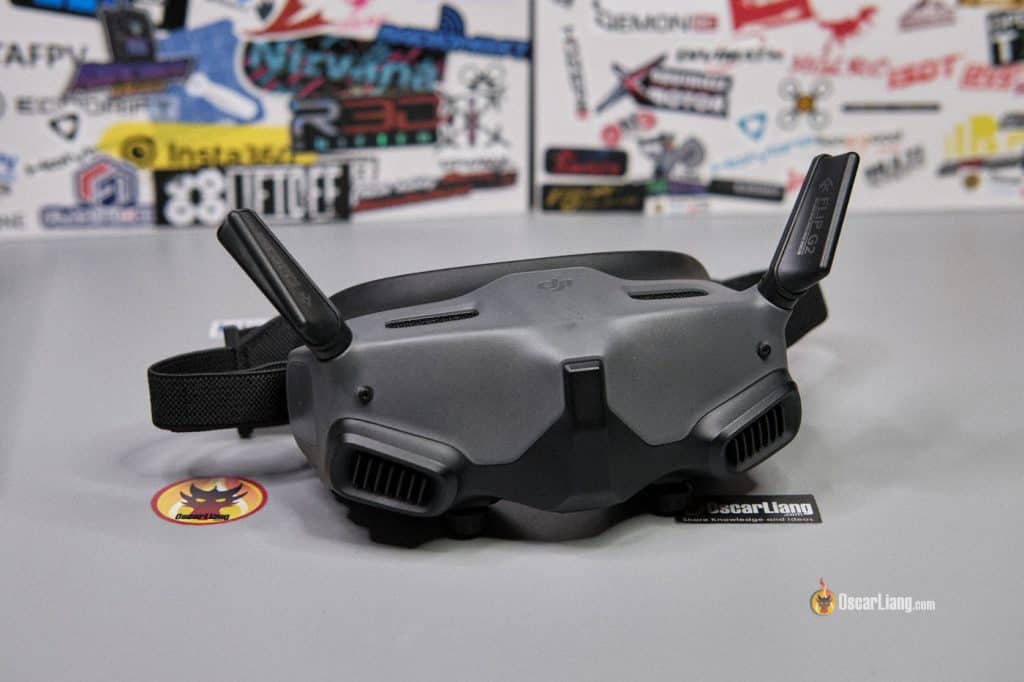Are you wondering about whether the Osprey Flip G2 antennas from FlyFishRC are worth the upgrade? In this review, I’ll be testing these antennas against the stock antennas that come with the DJI Goggles 2. By the end, hopefully it will give you an idea how they perform.
Table of Contents
Where to Buy?
Get the Osprey Flip G2 Antennas from these vendors:
Each antenna weighs around 8 grams, with dimensions of 5.9×2.9×1.4mm.
Why Upgrade the Antennas on DJI Goggles 2?
The DJI Goggles 2 come equipped with two foldable, removable antennas, allowing for the option to swap in aftermarket antennas. While the stock antennas perform admirably when paired with the O3 Air Unit, they should suffice for most users. However, if you are not happy with the range you are getting now and want to push your range further, you might consider an upgrade.
Note: Antennas on the DJI Goggles Integra are not removable, hence they don’t support aftermarket antennas.
Antenna Options
Antennas with higher gain offer better range and signal penetration. For the DJI Goggles 2, one notable alternative is the TrueRC X-Air MKII.
Learn more about antenna gain and its impact on range: https://oscarliang.com/best-fpv-antenna/#Antenna-Gain
The X-Air antennas are circularly polarized. This creates some degree of signal loss when used with the O3 Air Unit, as the unit comes with linearly polarized antennas. Despite this mismatch, the X-Air antennas should still provide longer range due to their significantly higher gain.
Read about antenna polarization here: https://oscarliang.com/best-fpv-antenna/#Antenna-Polarization
However, the X-Air comes with its own set of limitations. Being a directional antenna with high gain, its range is primarily focused in one direction. This means you’ll experience reduced range on the sides and behind you. Additionally, the X-Air antennas are not only bulky and not foldable, they also only operate on a 5.8GHz single band, making them incompatible with the DJI Remote Controller V2.
Advantages of the Osprey Flip G2
Enter the Osprey Flip G2 from FlyFishRC, a dual-band, linearly polarized directional antenna.
With a maximum gain of 5.8dBi, the Osprey Flip G2 promises to outperform the stock antennas in terms of range. Moreover, it offers a balanced performance—providing better coverage when flying behind yourself than the X-Air. They have the same polarization as the O3 Antenna, eliminating any signal loss penalties due to cross polarization. Additionally, its dual-band capability makes it versatile, supporting both 5.8GHz video and the 2.4GHz DJI Remote Controller V2. And let’s not forget—these antennas are foldable, making them as portable and compact as the stock antennas.
Specifications
- Frequency Range: 2.4-2.483GHz / 5.7-5.9GHz
- Gain: 4dBi (2.4GHz) / 5.8dBi (5.8GHz)
- Beam Width:
- Horizontal: 200°, Vertical: 120° at 2.4GHz
- Horizontal: 170°, Vertical: 65° at 5.8GHz
- VSWR: ≤1.8:1
- Polarization: Linear
- Impedance: 50Ω
- Connector: MCX
- Weight: 8g per antenna
- Dimensions: L 5.9mm x H 2.9mm x W 1.4mm
Testing Methodology
To assess the performance of the Osprey Flip G2, I conducted a comparison with the stock antennas of the DJI Goggles 2.
In the test, I limited the output power to 25mW and flew the drone in various scenarios—directly in front of me, behind tree lines, and in different orientations relative to my position. The key metrics I focused on were bitrate and video quality. I repeated the same test for both antennas.
Here’s the side-by-side comparison video:
Conclusion
Upon takeoff and flying the drone in front of me, past a few trees, the Flip G2 showed a slight edge in signal penetration, thanks to its higher gain. When there were no obstacles between the drone and myself, the performance difference was less pronounced.
However, when the drone was either to the side of or behind me, the performance was largely similar between the two antennas. In some instances, I found that the original antennas even performed marginally better.
So, is the Osprey Flip G2 worth the upgrade? The answer largely depends on your specific needs and flying conditions. If you frequently fly in environments with obstacles that could interfere with the signal, the Flip G2 might be the better choice due to its enhanced penetration capabilities. Otherwise, the stock antennas perform quite comparably and could suffice for most scenarios.
Feel free to drop a comment below to share your thoughts. Would you consider upgrading to the Flip G2 antennas based on these results?







6 comments
FlyFishRC Osprey Flip G2 Dual Band Antenna.
Can be use for goggle integra?
No.
So in short, for Long Range Fixed Wing Pilots, the X-Air is still the better choice, as long as foldable Antennas are not a need.
I use the X-Air together with two LHCPs connected to the O3. Works fine till 20km, then it becomes a bit blocky…
Hey I created a really detailed DJI FPV compatibility chart and I’d like to share it but I’m not sure where to put it. So I’m going to send it to a bunch of people and give you all permission to do with it what you would like and post it wherever you like. Email me if you want the png, pdf, and the source excel file. I sent a copy to you on infofpv.com
Thank you! Replied you on IntoFPV.
Seems like product for those who lost original antenna)